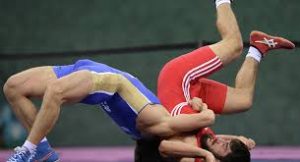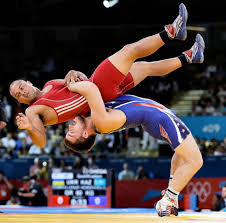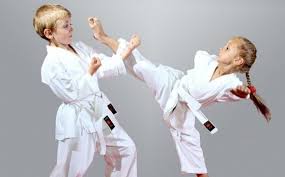FIGHT IN PRE-REVOLUTIONARY RUSSIA
 The development of modern struggle in Russia began at the end of the 19th century. Until the 80s she was fond of only single enthusiasts. In 1885, on the initiative of a physician and a great adherent of physical education, Vladislav Kraevsky, a weightlifting club was formed in St. Petersburg, in which they also engaged in wrestling. Over time, wrestling clubs and “weightlifting” societies began to appear in Moscow, and then in other cities. In 1896, Kraevsky’s companion Vladislav Pytlyasinsky published the first textbook in Russia on French wrestling.
The development of modern struggle in Russia began at the end of the 19th century. Until the 80s she was fond of only single enthusiasts. In 1885, on the initiative of a physician and a great adherent of physical education, Vladislav Kraevsky, a weightlifting club was formed in St. Petersburg, in which they also engaged in wrestling. Over time, wrestling clubs and “weightlifting” societies began to appear in Moscow, and then in other cities. In 1896, Kraevsky’s companion Vladislav Pytlyasinsky published the first textbook in Russia on French wrestling.
A year later, the country’s first championship was held: without dividing into weight categories and limiting the time of fights – until victory. Seven wrestlers from St. Petersburg and one from Riga took part in it. The champion was Alexander Schmeling. The second championship took place in 1898, but in the final duel between A. Schmeling and Georg Gackenschmidt, the winner was not revealed. They met in the finals of the third championship a year later. The final consisted of two fights. In both meetings, a clear victory was won by Gackenschmidt. (All three championships were played in a round-robin system, after which the two strongest wrestlers met in the final.) Due to the lack of an organization that would coordinate the activities of wrestling circles and societies of the country, from 1900 to 1912 Russian championships were not held.
The “international” chronicle of Russian wrestling dates back to 1898, when the first European Championship was held in Vienna (without dividing into weight categories). It was attended by 11 wrestlers from Austria, Germany and Russia. The first champion of the continent was the Russian G. Gakkenshmidt, who received the nickname Russian lion abroad.
At the 1908 Olympics in London, four classic wrestlers from Russia performed. Nikolai Orlov won the silver medal in welterweight, and Alexander Petrov in the heavy. But it was “unofficial participation.” Officially, Russia began to perform at the Games, starting with the 1912 Olympics in Stockholm. Then only one Russian wrestler – Martin Klein – managed to reach the finals. In the semifinals, he defeated 1911 world champion Alfred Asikainen on points. This fight lasted 11 hours and 40 minutes and entered the history of the struggle as the longest battle. Injured in the semifinal match, Klein could not participate in the finals – and in the end received a silver medal, losing the “gold” to the Swede Edwin Johansson.
In 1904, the first international championship in French wrestling among professionals was held in St. Petersburg. It was attended by 30 wrestlers from different countries. The championship was held in a circular system and lasted a whole month. Professional wrestling did not become an independent sport, turning over time into a sports show. Almost every circus in different cities of Russia held its own “world championships”, the results of which were usually known in advance. However, many of the subsequently well-known Russian wrestlers began as professionals. Ivan Poddubny, who has not lost a single competition in 40 years, former weightlifter Ivan Zaikin, Vladislav Pytlyasinsky, known not only as an athlete, but also as a talented coach, Ivan Shemyakin and others became the founders of the “Russian” school of wrestling, which has gained worldwide recognition . (Circus wrestling competitions both in our country and abroad were incredibly popular until the outbreak of World War II, and then gradually faded away. For example, 1955 world champion Alexander Mazur began his sports career as a circus wrestler.)
In 1913, the All-Russian Weightlifting Union was created, uniting 16 cities of Russia in which wrestling was cultivated. In 1914, the Union adopted international wrestling rules, in accordance with which championships began to be held in five weight categories: the lightest, lightest, medium, light heavy and heavy. Before that, there were no uniform rules, and in different cities the competitions were held in their own way. The union resumed holding the country’s wrestling championships. In 1913, the fourth Russian championship was held in Riga. The next national competitions were held, respectively, in 1914, and then in January and December 1915. The participants of the competition were divided into weight categories: at first there were four, and in the last two championships – five.
By the beginning of World War I, there were 20 sports organizations in Russia that cultivated wrestling, which included about 300 people.




